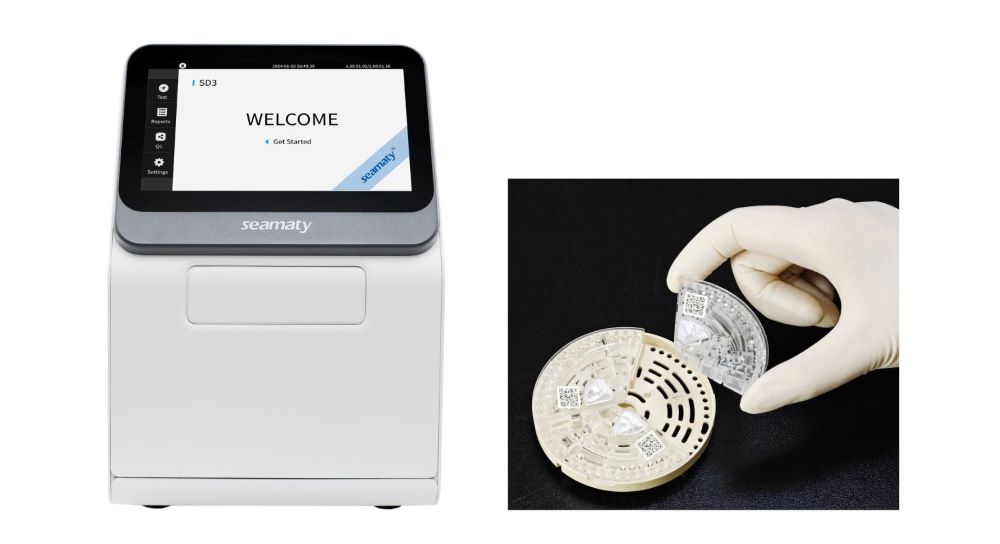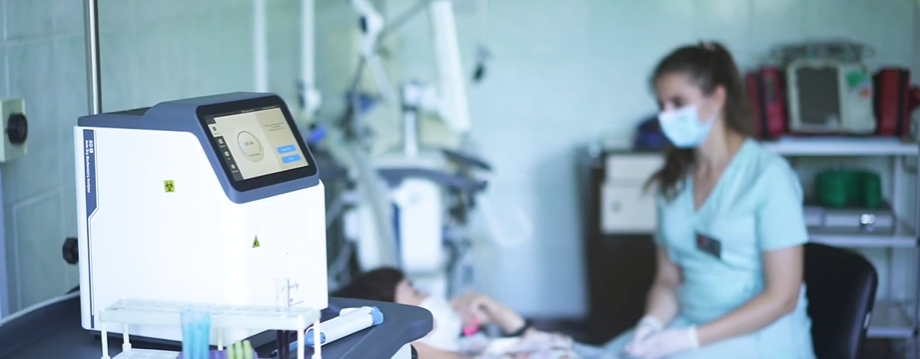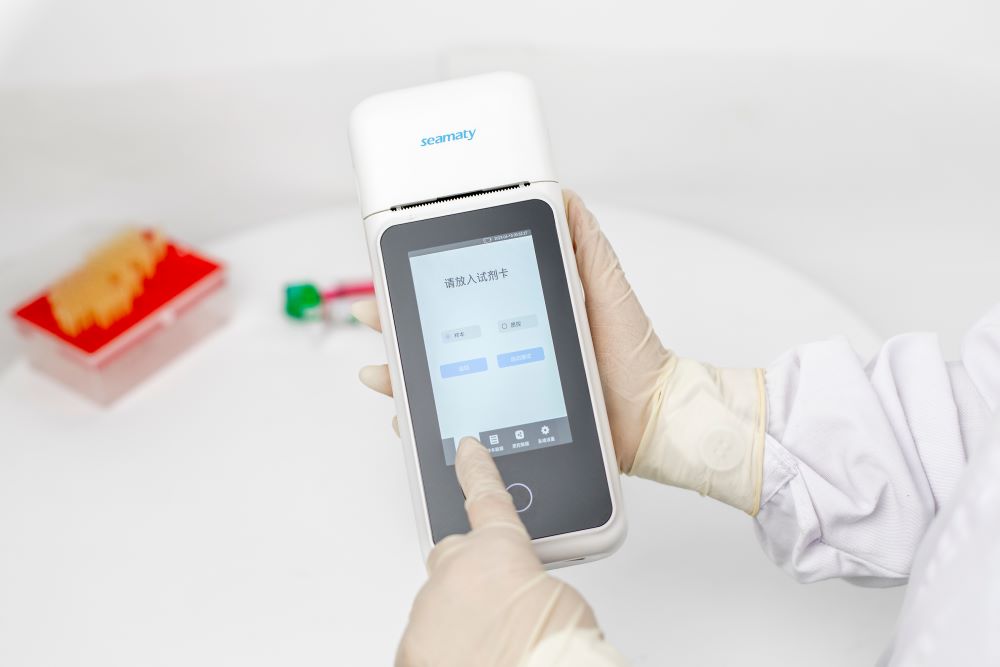release time:2024-04-29 13:50:55
In today's competitive healthcare landscape, labs and clinics are constantly under pressure to do more with less. Optimizing workflow efficiency and controlling costs are top priorities. Traditional point-of-care chemistry analyzers can hinder these goals, often requiring multiple tests on separate samples, leading to increased processing times and reagent expenses.
The Seamaty SD3 Dry Chemistry Analyzer is a game-changer for Point-of-Care Testing (POCT). This innovative, fully automated analyzer boasts a revolutionary design element: fan-shaped reagent panels. Unlike circular discs limited to a single test, these unique panels feature three separate sections pre-loaded with specific reagents. This ingenious design empowers you to perform three different tests on a single sample simultaneously.

The SD3's fan-shaped reagent panels offer significant cost-saving advantages for your lab or clinic:
· Reduced Reagent Costs: Eliminate the need for multiple single-use reagent discs. By consolidating three tests into one panel, you minimize reagent waste and reduce overall spending.
· Streamlined Workflow: Perform three tests at once, significantly reducing processing time compared to traditional methods. This frees up valuable staff time and allows them to focus on other critical tasks.
Beyond cost savings, the SD3 offers numerous benefits that enhance your overall POCT efficiency:
· Faster Test Results: Get accurate results in as little as 9 minutes. This expedited turnaround time allows for quicker diagnoses and treatment decisions, ultimately improving patient care.
· Simplified Operation: The SD3 is designed for user-friendly operation, requiring minimal training for staff. The intuitive interface ensures seamless integration into your existing workflow.
· Reliable Performance: Microfluidics technology ensures precise and dependable test results, allowing you to make confident clinical decisions.
The Seamaty SD3 Dry Chemistry Analyzer is more than just an analyzer; it's a strategic investment in the future of your POCT practice. With its innovative fan-shaped reagent panels, efficient design, and user-friendly operation, the SD3 empowers you to:
· Cut Costs: Reduce reagent expenses and minimize waste.
· Boost Efficiency: Streamline workflows and free up staff time.
· Improve Patient Care: Deliver faster diagnoses and quicker treatment interventions.
Ready to revolutionize your POCT practice and experience the benefits of the Seamaty SD3? Contact Seamaty today to learn more!

2025-03-04
Discover how microfluidic technology is revolutionizing in vitro diagnostics (IVD), including molecular diagnosis, immunodiagnosis, and biochemical analysis. Learn about microfluidic PCR chips, immuno-chips, and biochemical analyzers that enhance automation, speed, and sensitivity in disease detection.

2024-02-20
Explore the top 10 blood gas analyzers, including Siemens, Roche, and Abbott. Discover product models, price ranges, and future trends in this comprehensive guide. Make informed choices for healthcare with insights into performance, pricing, and after-sales service.

2022-05-06
Biochemical tests provide a basic assessment of the body's liver function, kidney function, blood glucose, lipids and electrolytes to help doctors prevent, diagnose and treat disease. A sample from a biochemical test that is haemolysed is likely to affect the test results. How can haemolysis affect the biochemical tests?